HERITAGE IN INDIA
BROUGHT TO YOU BY--WWW.ARKI-TRAVEL.BLOGSPOT.IN
India, a platform of rich culture and tradition amidst a huge range of diversity and equality, is home to some of the excellent manifestations of art and architecture in various forms and shapes. Long and strong stretches of history have resulted in the creation of several artistic illustrations and cultural depictions. A ride through the entire sphere of these architectural masterpieces will help you delve deeper into the country’s cultural bias. East to west, north to south – travel through the vast stretches of the nation to explore the various heritage destinations of India and peep into the range of intricate forms of art and architecture of India. The heritage destinations in India basically calls for a closer look as the following options are some of the greatest landmarks in the world of culture and ethnicity of the country of ancient glory and grandeur:TAJ MAHAL TOURIST PLACE
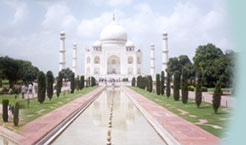
The immortal monument of love, Taj Mahal is one of the most visited medieval buildings of the world. Such is the importance of this eternal monument that it has almost become a symbol of India. Most foreigners who visit India are lured by the Taj and it is one of the first things that they want to visit in the country. The Taj Mahal tours take tourists on the fascinating journeys of the city of Agra and its surrounding locates, all of which still smell of history. With the numerous historic monuments that a tour of Agra promises, the erstwhile capital of the mighty Mughuls is one of the highlights of tourism in North India.
The star attraction of the Taj Mahal tours is of course, the Taj itself. Built by the fifth Mughul emperor Shahjahan (1628 – 1658), this monument has immortalized the name of Mumtaz Mahal, the beloved wife of Shahjahan, in whose memory he built this marvelous tomb. The Taj is characterized by highly stylized calligraphy, intricate carvings in marble, delicate arrangement of precious stones, and the famous pietra dura inlay work. The sheer size of the Taj is enough to mesmerize the observer, and indeed, many distinguished visitors from all over the world have been captivated by its ethereal beauty.
Agra is known as the city of Mughuls, and rightly so. Before the Mughuls, there were rulers here, but it is the Mughuls who gave Agra worldwide fame as one of the most magnificent cities of its times. The other Mughul monuments have given Agra the status of one of the premier tourist destinations in India. The Taj Mahal tours also cover these amazing medieval monuments that have witnessed dramatic moments in the history of India.
The chief among these is the Agra fort, which remained the center of Mughul power till the capital was shifted to Delhi. Fatehpur Sikri is yet another famous place, known for the lavish fortified palace of Emperor Akbar. It is located 37 kms west of Agra, and is among the most important destinations to be visited on an excursion from Agra. The massive gate called Buland Darwaza and the revered tomb of Sheikh Salim Chishti are the chief attractions of this place, apart from the magnificent red sandstone palace itself. Both the Agra fort and the palace complex at Fatehpur Sikri are among the best known Indian monuments. They also signify a great blend of Indian, Islamic and European architectural traditions that were allowed to fuse together under the patronage of the Mughuls.
Besides the above, the Taj Mahal tours also cover some other monuments which have been outfamed by the Taj and the imposing Agra fort. These include the tomb of Nurjahan’s father, given the title Itmad-ud-daulat, Chini ka Rauza, which is a tomb of one of Shahjahan’s ministers, and is known for its brilliant glazed tiles. The city also has a few beautifully laid out gardens, whose origins date back to the times of Babur, the founder of the Mughul dynasty. The tomb of Akbar at Sikandara is located about 5 kms from Agra and is among the city’s major attractions.
Last but not the least, the Taj Mahal tours let you visit the nooks and corners of the city that are still deep rooted in its history. The bazaars, the handicrafts, the fabrics, and even the sights and sounds, all make up the city of Agra.
tourists a wonderful tourism experience with some of the best known monuments of India. The chief claim to fame of the city is for being the capital of Mughul India for more than a century. The Mughuls consolidated their hold on India from here and as their might grew, they patronized some of the most fascinating works of architecture that the world has seen. The Taj Mahal is the crowning glory of the Mughul era. It represents the supreme achievements of the architects and masons of medieval India. The unmatched splendor of the Taj Mahal still attracts scores of tourists every single day from all over the world. The Taj Mahal tours are the perfect options for exploring the tourist attractions in Agra. Before visiting Agra and its many wonders, learn more about Taj Mahal tours in touristplacesinindia.com.
The Taj Mahal tours systematically cover all the monuments in Agra, as well as the other important tourist destinations located near the city. The massive Agra fort and Fatehpur Sikri are among the foremost highlights of tourism in north India and must be visited during a tour of Agra. The Agra fort was the center of Mughul imperialism in India and remained the symbol of Mughul might till the mid 17th century when the capital was shifted to Delhi by Shahjahan. The fort has many magnificent buildings, structures and gardens, including the Moti Masjid ( mosque), Angina masjid, Jahangiri Mahal, Diwan i Aam, Diwaan i Khas, Macchi bhawan, Daulat Khana i Khas, Khas Mahal, Shish Mahal, Anguri Bagh, and the imposing gateways. The fort also offers a splendid, although somewhat tragic view of the Taj Mahal some distance away along the banks of the river Yamuna. It is said that the old emperor Shahjahan, imprisoned in his own fort by his son Aurangzeb, spent his last few days gazing at the magnificent mausoleum he had built for his beloved wife.
The fortified palace of Akbar at Fatehpur Sikri, located 37 kilometers west of Agra is also a must visit site. This magnificent palace combines strong defensive features with delicate architecture. The beautiful red sandstone buildings stand alongside the village of Sikri. Apart from the palace and its splendid structures, the tomb of Sheikh Salim Chishti and the massive gateway named Buland Darwaza are the chief attractions at Fatehpur Sikri.
The Taj Mahal is of course the most important stop of all the tours. This massive marble monument needs no introduction. It is one of the most visited monuments of the world. The fifth Mughul emperor built his beloved wife this stupendous mausoleum, as per her dying wish that her tomb should be unlike anything that the world had ever seen. The magnificence of the Taj Mahal cannot be described in words. You have to visit it at least once as something remains unfulfilled in your life if you do not.
The other attractions of Agra include some lesser known tombs which are well worthy of a visit. The Chini ka rauza and the tomb of Itimad-ud daulat are the chief among these. Various Mughul gardens, including the Arambagh, whose origins go back to the reign of Babur, are also part of tourism in Agra.
Before choosing your itinerary, find out more about Taj Mahal tours so that you are well prepared when you land up in Agra.
The Taj Mahal in Agra is the glory of India. It is a monument that has become the symbol of the entire country to the world. For the Tourists visiting India from other countries of the world, the Taj is one of the first things to watch in India and remember forever. This spellbinding monument built by an inconsolable Mughul emperor Shahjahan after the death of his wife, continues to captivate generations of tourists. For experts in architecture, historians, and research scholars, the Taj offers a subject too vast, too complicated to comprehend. This is why scores of scholars continue to study the Taj Mahal architecture in order to get a better understanding of the intricacies of Mughul architecture that reached its zenith in the Taj.
Long before the first scaffolds were put in place, the nature of the proposed mausoleum had been decided. It was to be a rauza, a tomb set inside a garden. It was also to be a place of pilgrimage, as empress Mumtaz Mahal had died in childbirth, thus attaining martyrdom. According to some experts, the whole complex including the Taj was to be a replica of heaven as described in the holy Quran. All these considerations contributed towards the eventual design and plan of the monument.
According to legends about the Taj, before dying, Mumtaz Mahal asked her husband to construct for her a tomb such as the world had never seen. Shahjahan responded by assembling a team of the best artisans from India and neighboring countries. The chief architect, or mimar i kul, was Ustad Ahmed of Lahore, and Muhammad Hanif was appointed as master mason. Some accounts also credit an Italian architect for the design, but no such claims have been supported by facts. It is well known that although the designs were drawn up by the chief architect, the concept and inspiration for the Taj came from the emperor himself.
The architecture of Taj Mahal is a complex and unique blend of Persian, and indo Islamic styles. The indo Islamic style had been quite developed by the time the Mughuls came to India. They further added to the style by incorporating the charbagh garden concept and various Persian elements. For the Taj, the chief influence was to be Persian, but the harmony achieved reflects a careful and deliberate blend of the purely Indian styles. One of the striking features of the Taj Mahal architecture is the flawless symmetry maintained throughout the complex.
As the Taj was to serve as a tomb, a pilgrimage as well as a festive hall, all the necessary aspects were incorporated into the design. Thus, the Taj included provisions for shops, large assemblies, and the charbagh garden - a typical Mughul feature with footpaths crossing at right angles. The raised pool at the center is also a characteristic feature of Mughul gardens. It is supposed to duplicate the Garden of Eden, and reflects the monument as one goes closer.
The mausoleum measures 57 meters on each side, and rises to a height of 32 meters (108 feet). The dome and the finial rise to 72 meters. The surrounding terrace measures 95 meters (313 feet) on each side. The minarets on the four sides have been deliberately kept at a height lower than the dome, to accentuate the greatness of the main structure. The chatris (kiosks) on top of the mausoleum and the minarets are glaring examples of the fusion of Indian elements in the Taj.
The outstanding pietra dura inlay work using precious and semi precious stones is the icing on the cake for Taj Mahal architecture. In addition to this the intricate calligraphy found all over the mausoleum highlights the religious significance of the building.
The architecture of Taj Mahal is still being studied by experts who hope to uncover newer aspects of the amazing architecture. The Taj Mahal represents the combined result of centuries of synthesis between the architecture of regions separated by thousands of miles across the world. It can be said to be one of the truly international monuments that has brought together the traditions of many cultures together.
KHAJURAHO TOURIST PLACE



| However over a period of time, due to rough weather conditions, only 20 of these temples have survived. These temples are divided into two distinct groups, the Western and the Eastern group of temples.Historically too, these temples are relevant and several legends are associated with their creation. According to one legend, the builders of Khajuraho were the descendants of moon. The origin of the Chandela dynasty is also fascinating and this tale is unfolded through the various sculptures of the temples. The legend reveals how the Moon God seduced Hemvati, a beautiful young daughter of a Brahmin priest, when she was bathing one evening.
in central India, Khajuraho is a famous tourist and archaeological site known for its sculptured temples dedicated to Shiva, Vishnu, and Jain patriarchs. Khajuraho was one of the capitals of the Chandela kings, who from the 9th to the 11th century CE developed a large realm, which at its height included almost all of what is now Madhya Pradesh state. Khajuraho extended over 21 sq. km and contained about 85 temples built by multiple rulers from about 950 to 1050. In the late 11th century the Chandela, in a period of chaos and decline, moved to hill forts elsewhere. Khajuraho continued its religious importance until the 14th century (Ibn Batuta was impressed by it) but was afterwards largely forgotten; its remoteness probably saved it from the desecration that Muslim conquerors generally inflicted on Hindu monuments. In 1838 a British army captain, TS Burt, employed by the Asiatic Society in Calcutta, came upon information that led him to the rediscovery of the complex of temples in the jungle in Khajuraho.
Of the 85 original temples-most constructed of hard river sandstone-about 20 are still reasonably well preserved. Both internally and externally the temples are richly carved with excellent sculptures that are frequently sensual and, at times, sexually explicit. The temples are divided into three complexes-the western is the largest and best known, containing the magnificent Shaivite temple Kandariya Mahadev, a 31m high agglomeration of porches and turrets culminating in a spire. Modern Khajuraho is a small village, serving the tourist trade with hotels and an airport. Khajuraho's name derives from the prevalence of khajur, or date palms, in the area.
A child was born of this union between a God and a mortal and was named Chandravarman. As the mother of the child was unwed, she was ostracized by society and she was forced to seek refuge in the dense forests of Central India. There she became her son's teacher and also showered maternal affections on him. When the son grew up, he found the Chandela dynasty. When he was established as a ruler, his mother visited him in his dreams. She pleaded him to build temples, revealing the intensity of human passions. This would also give way to the realization of emptiness of human desire. Chandravarman started the construction of these temples and other rulers who succeeded him, made further additions to it.Another legend specifies that in those days boys, until they attained manhood lived in hermitage. The only way they could prepare themselves for the role of a 'householder', was after studying these sculptures and the earthly passions which they portrayed. The theme of these temples revolves around woman and depicts her different moods and facets. Khajuraho has emerged as one of the major historical sites in India apart from being one of the major tourist destinations in Madhya Pradesh. These temples are generally built of sandstone and belong to the Vaishnava, the Shiva or the Jaina sects. Khajuraho has its own airport which makes it even more accessible for the tourists. Getting accommodation here is also quite convenient. | ||
| Khajuraho Temples have created a niche for itself as one of the highlights of Madhya Pradesh Tourism due to its uniqueness. Khajuraho temples are the living images of the glorious cultural heritage of India. These temples have the most unique images and sculptures engraved on them which apparently depict erotic and sensuous themes, but were actually intended to convey the spiritual aspects of the passions of human beings, according to one of the many theories that have been put forward by experts on these temples. These temples are more like India's own gift to the outside world.
The architecture of these temples also differs from its other counterparts in the major temple cities of India. Generally the temples of Khajuraho are built several meters off the ground, on high platforms. Mostly granite and sandstone have been used for the construction of these temples. Every temple has an entrance hall, also known as 'mandapa' and a sanctum sanctorum, which is also known as 'garbha griha'. The pyramidal roofs of the porch and hall of the temple have several horizontal layers.
The Khajuraho temples are mainly divided into three categories, the Western group, the Eastern group and the Southern group. The main temples of the Western group are the Kandariya Mahadeo, Chausanth Yogini, Chitragupta Temple, Vishwanath Temple, Lakshmana Temple and Matangeshwara Temple. The largest among these is the Kandhariya Mahadeo temple, followed by the Chausanth Yogini temple. The Eastern group of temples comprises the Ghantai Temple, Parsvanatha Temple and Adinatha Temple. Paraswanath Temple is the largest Jain temple of the Eastern group and is known for its intricate stone carvings. Duladeo temple and Chaturbhuja temple are the two main temples in the Southern group of Khajuraho temples.
Initially the number of temples was 85 but most of them were unable to live up to the ravages of time, and the number of temples is now reduced to 22. The construction of these temples began during the period of the Chandela dynasty. Several legends are associated with the construction of these temples. It is believed the creators of Khajuraho are direct descendants of Moon. The legend describes how Hemvati, a very attractive young daughter of a Brahmin priest was seduced by the moon god when she was bathing. A male child named Chandravarman was the result of this union. Unable to tolerate the humiliation of becoming an unwed mother, she went to the forest and raised her up her son, showering motherly affections on him but also disciplining him at the same time. The child grew up to become the founder of the Chandela dynasty. In his dream he had a vision of his mother, pleading him to construct temples depicting human passions and by doing so, bring to surface the ultimate emptiness of human desire.
According to another theory, the erotic images of Khajuraho have another significance. Generally in those days the boys lived in hermitage, practicing the Hindu norm of 'Brahmacharya' till they attained manhood. The sole way they could prepare themselves for the role of a 'householder' was by studying these sculptures and the passions they depicted.
Khajuraho, India's pride, is located in the Chahatarpur district of Madhya Pradesh. The place is well known for its temples, depicting sculptures in erotic poses. Khajuraho maps can give you more information on the location of the Khajuraho temples and other nearby places of attraction. Maps of Khajuraho can also help you to understand better the most conveninet routes to reach this place. Extreme tropical climate is charaterestic of Khajuraho. The temperatures here during winters can be as low as 4 degree celsius while during sumers, it can go up to 47 degree celsius.
Khajurao has left an everlasting mark on the history of India, something the future generations too, will always remember. The temples of Khajuraho are the living proof of our rich cultural heritage. Tourists from different parts of the world visit Khajuraho to relive the moments of our history and study its significance to the cultural history of India. During your Khajuraho excursions you will get an opportunity to explore the temples of Khajuraho and the nearby places.
The temples of Khajuraho are the most important aspect of Khajuraho excursions, but you cannot afford to miss out on the nearby places. Some of the places covered during Khajuraho tours are:
Panna National Park:
Located at a distance of 40kms from Khajuraho, this was the erstwhile capital of the Bundela Kingdom. At present the park is spread across 546 km on the banks of the River Ken. For wildlife enthusiasts, this place is an ideal place to observe Indian wildlife up close. Here you will come across different species of wild animals like boars, sambars, chinkaras and if you are lucky, even a tiger might come face to face. Early morning safaris are organized which can help you to explore the park better. A wide variety of birds can also be spotted. Often the tour to the park and other places are included in the Khajuraho tour packages. Dhubela Museum: The museum is renowned for housing several sculptures belonging to the shakti cult. You will also come across different weapons, garments and paintings in the museum. It is situated at a distance of 64 kms away from Khajuraho.
Pandava waterfalls:
30kms away from Khajuraho, Pandava waterfall is located on the Ken River. It is believed a major part of exile years of the Pandavas was spent here. The crystal clear water of the waterfall and the overall serenity of the place can evoke your senses. Lakes: The Benisagar Lake is situated close to a dam on the Khuda River. After your trip to Khajuraho temples, you can easily visit this lake, located at a short distance from here. Another Lake worth visiting is the Rangaun Lake. The scenic beauty of the lake can leave you mesmerized. Bandhavgarh National Park: You can also include a trip to Bandhavgarh in your excursion to Khajuraho. Sal and bamboo trees make up most of the forest cover here. It is one of the best known wildlife destinations of India. KONARK TOURIST PLACE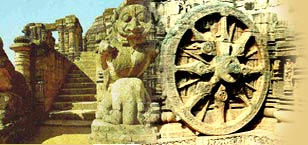 Set along the Bay of Bengal, 65 km from Bhubaneswar, the small town of Konark in the state of Orissa has a significant history and adds a lot to the Indian cultural scene on the whole. Mostly famous for the Sun Temple, it sees the advent of several tourists and historians at various points of the year from various parts of the world. Located near the holy city of Puri and believed to have been built by Narashimhadev I in the mid-13th century, the temple is devoted to the Sun God or Surya and is an extraordinary work of art reflecting Orissa’s medieval architecture, designated as a (UNESCO) World Heritage Site by the United Nations. 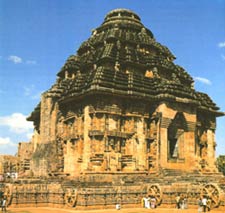 The massive structure of the eminent temple of Konark, now largely dilapidated, has been structured in the shape of a chariot bearing the Sun God across the heavens. The huge intricately carved wheels of the chariot, around the base of the temple, are the key attractions of the temple. The spokes of these wheels act as sundials, and the shadows formed by these will give you the exact time of the day. The pyramidal roof of the temple, made of sandstone, rises up to 30 meters in height. Like the temples at Khajuraho, the Sun Temple at Konark is full of erotic sculptures. The massive structure of the eminent temple of Konark, now largely dilapidated, has been structured in the shape of a chariot bearing the Sun God across the heavens. The huge intricately carved wheels of the chariot, around the base of the temple, are the key attractions of the temple. The spokes of these wheels act as sundials, and the shadows formed by these will give you the exact time of the day. The pyramidal roof of the temple, made of sandstone, rises up to 30 meters in height. Like the temples at Khajuraho, the Sun Temple at Konark is full of erotic sculptures.Set along the Bay of Bengal, 65 km from Bhubaneswar, the small town of Konark in the state of Orissa has a significant history and adds a lot to the Indian cultural scene on the whole. Mostly famous for the Sun Temple, it sees the advent of several tourists and historians at various points of the year from various parts of the world. Located near the holy city of Puri and believed to have been built by Narashimhadev I in the mid-13th century, the temple is devoted to the Sun God or Surya and is an extraordinary work of art reflecting Orissa’s medieval architecture, designated as a (UNESCO) World Heritage Site by the United Nations.  The massive structure of the eminent temple of Konark, now largely dilapidated, has been structured in the shape of a chariot bearing the Sun God across the heavens. The huge intricately carved wheels of the chariot, around the base of the temple, are the key attractions of the temple. The spokes of these wheels act as sundials, and the shadows formed by these will give you the exact time of the day. The pyramidal roof of the temple, made of sandstone, rises up to 30 meters in height. Like the temples at Khajuraho, the Sun Temple at Konark is full of erotic sculptures. The massive structure of the eminent temple of Konark, now largely dilapidated, has been structured in the shape of a chariot bearing the Sun God across the heavens. The huge intricately carved wheels of the chariot, around the base of the temple, are the key attractions of the temple. The spokes of these wheels act as sundials, and the shadows formed by these will give you the exact time of the day. The pyramidal roof of the temple, made of sandstone, rises up to 30 meters in height. Like the temples at Khajuraho, the Sun Temple at Konark is full of erotic sculptures.
Located on the banks of Bay of Bengal, at 65 km from the city of Bhubaneswar, the small town of Konark in Orissa has a significant past and adds considerably to the Indian cultural horizon on the whole. The first thing that attracts you about Konark is the Sun Temple, which sees the footfalls of several travelers and historians at different points of time from various corners of the world. Believed to have been built by Narashimhadev I of the Ganga dynasty in the mid-13th century, to commemorate his victory over the Muslims, Konark, is devoted to the Sun God or Surya. Designated as a (UNESCO) World Heritage Site by the United Nations, it is an amazing piece of art reflecting Orissa’s medieval architectural bent.
Fast Facts
History
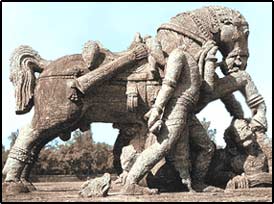 Having derived its name from the two words, kona (corner) and arka (sun), the city of Konark owes its name to Konarka, the presiding deity of the Sun Temple. Sun God is revered and worshipped widely in many parts of the world. In India, this tradition goes back to the period of Rig Veda. The Puranas mention the name of Rishi Dirghatamas as the first antecedent of prince Kalinga, after whom the territory was christened. (Kalinga was the former name of Orissa.) The hymns in the Rig Veda that allude to the glory of the Sun were supposedly written by Rishi Dirghatamas. Having derived its name from the two words, kona (corner) and arka (sun), the city of Konark owes its name to Konarka, the presiding deity of the Sun Temple. Sun God is revered and worshipped widely in many parts of the world. In India, this tradition goes back to the period of Rig Veda. The Puranas mention the name of Rishi Dirghatamas as the first antecedent of prince Kalinga, after whom the territory was christened. (Kalinga was the former name of Orissa.) The hymns in the Rig Veda that allude to the glory of the Sun were supposedly written by Rishi Dirghatamas.Konark was one of the first centres of Sun worshipping in India. The place finds mention in the Puranas as Mundira or Mundirasvamin, a name that was later restored by Konaditya or Konarka. Besides the Puranas, other religious texts also indicate the existence of a sun temple at Konark much earlier than the present temple.
The erstwhile busy port of Kalinga, the town of Konark maintained good maritime trade relations with Southeast Asian countries. However, it fell into neglect in the early 17th century subsequent to its desecration by an ambassador of the Mughal emperor Jahangir.
However, legend says that the temple was built by Samba, the son of Lord Krishna. Samba is believed to have been afflicted by leprosy, as a result of his father’s curse on him. After 12 years’ penance, he was healed by Surya, the Sun God, in whose honour he constructed this temple. Besides the above, there are other tourist attractions in Konark as well. Konark Archaeological Museum, Konark Beach, Ramachandi temple and Konark Math are some amongst them.
Best Season, Climate and Clothing
Konark is best visited between October and March. The summers in Konark are scorching hot with temperature soaring up to as high as 43 degrees Celsius. The place experiences heavy rainfall between July and September.
HAMPI TOURIST PLACELocated on the banks of Tungabhadra River about 350 kilometers north of Bangalore and 13 km from Hospet, the village of Hampi in North Karnataka alludes to tremendous historical importance. Sprawled over more than 25 square kilometers, Hampi, the erstwhile major trading center is home to giant temples, market streets, palaces, and aquatic structures, forts and a plethora of other ancient monuments. Familiar as we are with the glory of Hampi through the leaves of history, it highlights the ruins of the Vijaynagar kingdom of the late fourteenth century. Accordingly, the city has been drawing several 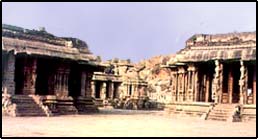
Familiar as we are with the glory of Hampi through the leaves of history, it highlights the ruins of the Vijaynagar kingdom of the late fourteenth century. Accordingly, the city has been drawing several s numerous temples, monolithic structures, figures and monuments – all exhibiting rich Hindu architectural culture. The Vittal temple, Virupaksha temple, and Kodandarama temple are examples of the same. Owing to the later influence of the Muslims in the mid 16th century, have come up the Lotus Mahal and Queen’s Bath which show signs of Muslim culture during that era. The 15th-century Virupaksha Temple rises majestically to the western end of the famous 35 yards wide and nearly 800 yards long Hampi Bazaar area. The temple has a 120 feet tall tower at its eastern entrance. The temple houses the shrines of Shiva, Pampa and Bhuvaneswari. Located 3 kms down the road, the temple of Malyavanta Raghunathaswamy is constructed in the Dravidian style of architecture. Strange motifs of fish and marine monsters engraved along its outer walls deserve appreciation. The Vithala Temple Complex with its 56 musical pillars is one of the most splendid monuments and one of the finest tourist attractions in Hampi. To the east of the hall is located the famous Stone Chariot with stone wheels that actually move. Facing the shrine stands the great mandapa on a richly sculpted basement. Its roof is pillared with granite, around 15 feet in height, each again consisting of a central pillar enclosed by detached shafts, all cut from one single block of rock. House of Victory was built to commemorate the victory of Krishnadeva Raya against the King of Orissa. The internal spaces between the rows of the plinth-moldings here are most intricately carved. Westwards from the House of Victory, guiding through two ruined gates, the way leads to the Hazara Ramaswami temple which is believed to have been the private place of worship of a royal family. The chief attraction of the temple is the sequence of scenes from the Ramayana engraved on two of the inner walls of the mantapa. The King’s Balance is where kings were weighed against gold, grain, or money which was later distributed amongst the poor. The Queen’s Bath used to be a swimming pool, 50 feet long and 6 feet deep, flaunting arched corridors, balconies and lotus-shaped fountains of perfumed water. Sculpted in the shape of a lotus flower, the two-story structure of the Lotus Mahal with beautiful archways set in geometric pattern was an air-cooled summer palace of the queen. The Elephant Stables is a beautiful example of the blend of Hindu and Muslim style of architecture, and was home to around 11 elephants in separate sections. Mahanavami Dibba is a lion story wooden structure from which the kings and princes viewed the town with pomp, colour and revelry at the time of the Mahanadu festival. Daroji Bear Sanctuary a rather new set up near Hampi in the eastern plains of Karnataka has proved a home for the Indian Sloth Bears. Visit the village of Hampi during the Vijayanagar Festival which is organized by the Government of Karnataka in the month of December to make your trip worth remembering. Log on to www.touristplacesinindia.com which gives online information about Hampi, the tourist attractions on your tour to Hampi – one of the favorite tourist destinations in India, booking for India travel tours, and tour packages on your tour to India.
Situated along the banks of Tungabhadra River approximately 13 km from Hospet and 350 kilometers north of Bangalore, the village of Hampi in North Karnataka covering more than 25 square kilometers, holds tremendous historical significance. Research about Hampi says that the erstwhile major trading center bears historical legacy in forms of giant temples, palaces, market streets, and forts and several other ancient monuments.
Fast Facts
History:
The history about Hampi will tell you that it once matched the glory and grandeur of erstwhile Rome. Witnesses to this fact are its forts, palaces, temples, sculptures, baths, irrigation canals, bazaar ruins that talk of a civilization belonging to the medieval era. The first settlement in Hampi began as early as 1st century AD. A number of Buddhist sites belonging to that era can be found around the site of Hampi, the capital of the mighty Vijayanagar Empire. Discovered by two brothers, Harihar and Bukka in 1336, Vijaynagar once stood as one of the largest Hindu empires in India. It reached its peak during the reign of Emperor Krishnadevaraya (1509-1529) who was the greatest ruler of the time and controlled almost all of peninsular India south of Tungabhadra River. It was famously visited by travelers and writers like Abdur Razak, Nicolo Conti, and Domingo Paes.
Seven concentric lines of fortifications guarded the city from any foreign assault. The Vijaynagar Empire developed, with the flourish of both cotton and spice trade through the routes of southern India. Hampi has been referred to by medieval historians as an important center of trade. Sadly enough, however, the death of Krishnadevaraya led to the downfall of the empire in 1565 in the hands of the combined armies of the five Muslim kingdoms-Bidar, Ahmednagar, Bijapur, Golconda and Berar.
Best Season, Climate and Clothing: Scorching summers (April-June), and cool winters (October-February) primarily characterize climate of Hampi. The south-western monsoons hit the land from June to August. The best time to visit Hampi is between the months of October and March. How to Reach Hampi: By Air: The nearest airstrip is located at Tornagallu in Sandur Taluk which is 32 kms away from Hospet. Other convenient airports are at Belgaum and Bangalore. By Road: Situated at 350 kms from Bangalore, Hampi is well connected by regular KSRTC bus services from Hospet. 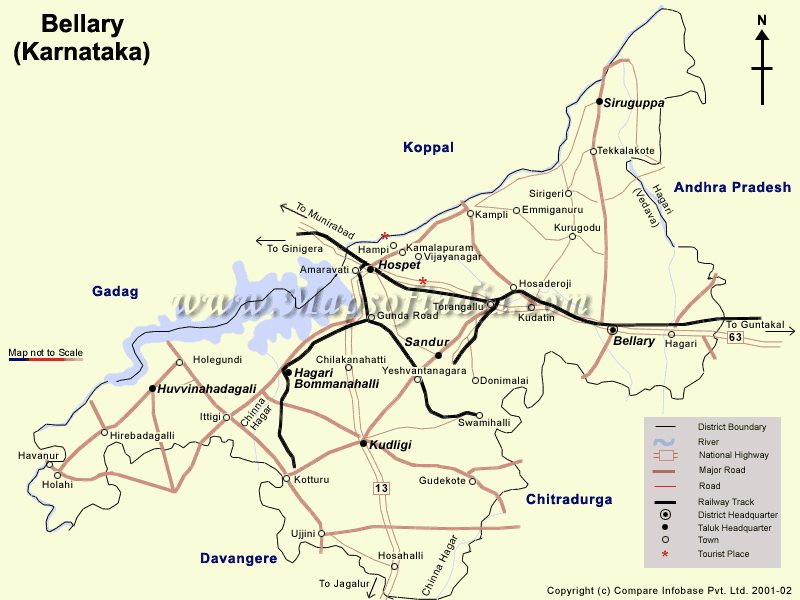
NALANDA TOURIST PLACEThere is some doubt regarding the exact period of establishment of the University of Nalanda. Some scholars believe that it was established in the 5th century AD by the Gupta kings, while there are some references that point to a much earlier existence. There is, however, no doubt regarding the fact that the university flourished between the 5th and 8th centuries. It is said that the residential university catered to 2000 teachers and over 10000 students, many of whom came from far off countries, making Nalanda one of the earliest international universities. Hiuen Tsang, the famous Chinese traveler and scholar arrived here in the 7th century during the reign of the great Indian king Harshavardhana. He is said to have studied extensively about Buddhism and other religions of India, eventually carrying important manuscripts back with him to China. It is quite evident that Nalanda has played a significant role in the propagation of Buddhism in many of the countries where it is popularly practiced today. The glorious journey of Nalanda came to a violent and tragic end when the entire complex was destroyed beyond redemption by the invading Turkish armies in 1197 under Mohammad Bakhtiar Khilji, a general of Qutb-ud-din Aibak, the first ruler of the so called slave dynasty in India. Nalanda never regained its past status, and its fall resulted in a dramatic decline for Buddhism in India. The legacy, however, still lives in far off countries like China and Sri Lanka, where Buddhism is still practiced according to the guidelines formulated in Nalanda several centuries ago. Tourism in Nalanda: The tours of Nalanda take tourists to the ruins that are the only remaining evidence of the past glory of this ancient residential university. These ruins are among the most renowned tourist attractions in Bihar, and are important to the Buddhist tourists from China, Korea, and other countries along with the other major Buddhist sites in Bihar and Uttar Pradesh like Budh Gaya, Sarnath and Kushinagar. A glimpse of the ruins takes one back to the ancient times when this complex used to bustle with activity. The halls would be filled by students and the ceremonial chanting of monks would be heard from the temples. The desolate ruins would also make one empathize with the tragic end that this glorious institution had to face. The Museum – among the important places in Nalanda, the Nalanda museum is the most notable. The museum houses relics from the last days of the university. Some beautiful bronze figures of Buddha are also exhibited here, apart from a fine collection of coins and pottery. The Nava Nalanda Mahavihar is also established at this site, and is devoted to the studies of Buddhism and Pali literature. There are some other tourist spots around Nalanda, including Surajpur and Rajgir, which should be covered by tourists during their tours of Nalanda. Touristplacesinindia.com offers all inclusive online information about Nalanda in Bihar, and other important tourist places in India. 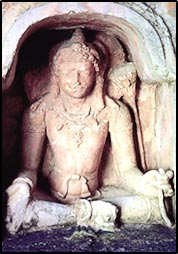 The ruins of the ancient residential university of Nalanda near Patna, in Bihar, are the silent reminders of the high levels attained in the field of education and learning in India during the ancient ages. Nalanda was one of the best known universities of its time, attracting thousands of students from far off places. Scholars all over Asia and other countries in the Middle East had learnt about Nalanda and continued to visit Nalanda till its destruction by the Turkish and Afghan invaders in the 12th century. The place is now one of the tourist attractions in Bihar and attracts tourists, especially Buddhists from all over the world. Touristplacesinindia.com provides online information about Nalanda and other famous as well as lesser known tourist spots in India. The ruins of the ancient residential university of Nalanda near Patna, in Bihar, are the silent reminders of the high levels attained in the field of education and learning in India during the ancient ages. Nalanda was one of the best known universities of its time, attracting thousands of students from far off places. Scholars all over Asia and other countries in the Middle East had learnt about Nalanda and continued to visit Nalanda till its destruction by the Turkish and Afghan invaders in the 12th century. The place is now one of the tourist attractions in Bihar and attracts tourists, especially Buddhists from all over the world. Touristplacesinindia.com provides online information about Nalanda and other famous as well as lesser known tourist spots in India.
Fast Facts
History
The exact date of the establishment of the university is not yet known. Scholars have varied views on this, but it is generally accepted that the university reached its pinnacle during 5th to 8th centuries under king Harshavardhana ( 7th century AD ), and the Guptas who succeeded him in Northern and Eastern India. Although much of the vast compound is yet to be excavated, the ruins do give an idea about the extent of the university. As many as 10000 students are said to have studied here at a time, in addition to about 2000 teachers and a similar number of monks. To provide for these vast numbers, there must have been an extensive system of rationing and providence of all the other necessary amenities.
This proves that a well organized administration continued to exist through many centuries at Nalanda. Many famous scholars have visited the university in search of the various Indian manuscripts of repute. Hieuen Tsang is the best known among them. He visited the place during the reign of Harshavardhana, one of the greatest kings of India, in the 7th century AD. The Turkish and Afghan invaders, who followed the first invasions in India by Mohammad Ghuri, attacked Nalanda and destroyed it completely in 1197 AD. The damage was irreparable. Buddhism suffered heavily, never regaining its past status in India. However, it flourished in the countries whose scholars had taken knowledge from Nalanda with them, like China, Sri Lanka, Thailand and Korea.
Climate and Tourism
Summer temperatures range between 20 to 37.8°C, while winters see temperatures between 8 – 25 °C. Temperatures can dip below this range though, and visitors should carry woolens during December to February. The Best time to visit is between October and March.
Nalanda is among the major places that are associated with Buddhism in India. Tourism in Bihar benefits a lot from these places. The tours of Nalanda cover the entire site of the university, and some interesting spots nearby, including Surajpur and Rajgir.
Destroyed almost completely in the 12th century AD by invaders,
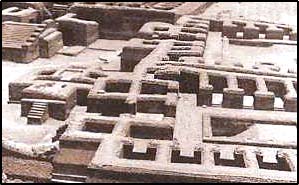 this ancient university never regained its past glory. The ruins of Nalanda bear witness to the sad and dramatic fate of this once famous center of learning. Before meeting its fate, Nalanda continued to be one of the major universities of the world for over 9 centuries. Some scholars date this university to an even earlier date. Today, the ruins are among the major destinations that make up tourism in Bihar. The tourist attractions in Nalanda include the ruins of the university, a museum, a research center and some nearby sites that are equally interesting. Some of the main tourist attractions in Nalanda are being discussed below. this ancient university never regained its past glory. The ruins of Nalanda bear witness to the sad and dramatic fate of this once famous center of learning. Before meeting its fate, Nalanda continued to be one of the major universities of the world for over 9 centuries. Some scholars date this university to an even earlier date. Today, the ruins are among the major destinations that make up tourism in Bihar. The tourist attractions in Nalanda include the ruins of the university, a museum, a research center and some nearby sites that are equally interesting. Some of the main tourist attractions in Nalanda are being discussed below.
The Ruins:
The ruins of Nalanda are spread over 14 hectares of land. This is supposedly only a fraction of the immense area that is believed to have supported 10000 students and 2000 teachers, apart from a large number of support staff. Among the ruins can be seen many Buddhist structures including stupas, chaityas, temples and monasteries. The dormitories of the students indicate the residential status of the university. Stupa of Sariputta: This is one of the most noticeable structures among the ruins. Sariputta was one of the most prominent disciples of Buddha and became a celebrated Arhat, believed to have attained salvation. He was born in Nalanda and died here as well, according to beliefs. The stupa of Sariputta is an impressive structure. It has a pyramidal shape and towers above the entire complex. This place seems to have been surrounded by pillared structures which must have been a grand sight during the heydays of Nalanda. 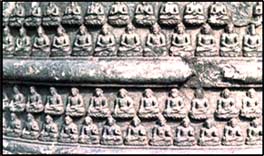 Hiuen Tsang Memorial Hall: Hiuen Tsang Memorial Hall:This hall is believed to have been erected in memory of the famous Chinese scholar who reportedly stayed here for 12 years as part of his tour of India in the 7th century AD. Whatever the purpose of this hall was, it is a reminder of the grandeur of the Nalanda University. Surya Temple: This temple is dedicated to the Sun God, greatly revered since the Vedic ages in India. It is an important and interesting spot in Nalanda, and is considered among the major Nalanda tourist attractions. A five feet high statue of Goddess Parvati is the chief attraction of the temple, in addition to some beautiful statues of Buddhist and Hindu deities.
Nalanda museum:
This was established in 1971 with the chief aim of preserving the heritage of this spot and educating the visitors about the history of Nalanda. The museum is one of the chief tourist attractions in Nalanda and exhibits a large number of artifacts that include manuscripts, seals, and statues. This place should not be left out during tours to Nalanda. Nav Nalanda Vihar: This institution was set up in 1951 by the Bihar government. The aim was to bring back the status of Nalanda as a seat of education. The institute teaches the Pali language and other aspects of Buddhism to Indian and foreign students. It is also an interesting place to visit for the tourists.
Nalanda is a historic sit located close to Patna, the capital of Bihar, a state in the eastern part of India. The place was the site of a famous university in ancient India and used to be visited by scholars and students from far off countries. The ruins of the university are now a major tourist attraction in Bihar and many tourists from all over the world arrive here to relive the lost grandeur of this place. Touristplacesinindia.com offers a comprehensive online tourist map of Nalanda that provides at glance information about the city. This Nalanda Map can be used to plan road trips and excursions to or from Nalanda. For more information about Nalanda, log on to www.touristplacesinindia.com.
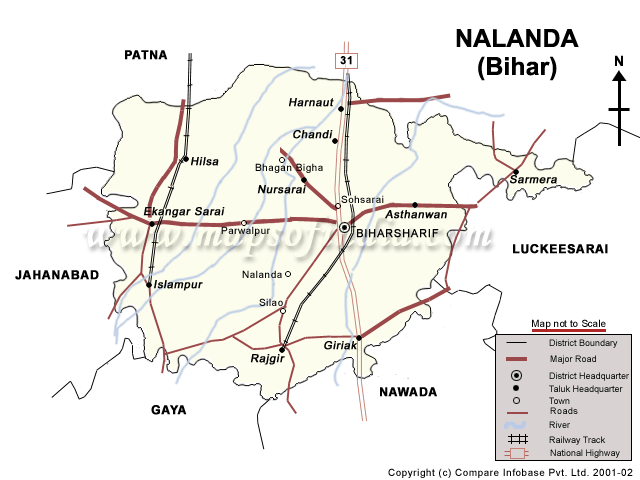
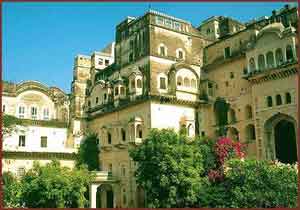 Neemrana town in Alwar, Rajasthan is quite ancient and is located on the Delhi-Jaipur highway. This magnificent town is located in the Alwar district of Rajasthan and commands scenic vistas of its rugged surroundings. Neemrana has got its name from a valiant local chieftain named Nimola Meo. He had to suffer defeat at the hands of the Chauhans and appealed that his name should be given to his lost kingdom. Neemrana is an ideal base to explore the surrounding destinations that have lots in store to offer to visitors. Neemrana town in Alwar, Rajasthan is quite ancient and is located on the Delhi-Jaipur highway. This magnificent town is located in the Alwar district of Rajasthan and commands scenic vistas of its rugged surroundings. Neemrana has got its name from a valiant local chieftain named Nimola Meo. He had to suffer defeat at the hands of the Chauhans and appealed that his name should be given to his lost kingdom. Neemrana is an ideal base to explore the surrounding destinations that have lots in store to offer to visitors.A trip to Neemrana is incomplete without a visit to the Neemrana Fort, which is the most popular among the tourist attractions in Neemrana. Neemrana Fort is located on a high hillock and it commands magnificent views of the surrounding beauty. Nowadays, the Neemrana fort is a leading heritage resort and is an ideal venue for weddings and conferences. When you step inside this hotel, you will virtually get transported to an entirely different world. The ambiance is simply captivating and features period furniture, antique works of art and frescoed paintings.
The nearby town of Kesroli is located at a distance of 155 kms from Delhi and is an ideal base for exploring the grandeur and natural beauty of Rajasthan. This place is only some distance from Neemrana and excursions from Neemrana would be ideal for exploring this magnificent town that has also its mention in the mythology. According to the historians this place can be traced to Matsya Janapada of the Mahabharata times. Here you will come across some of the oldest remains of a Buddhist Vihara where the Pandavas are believed to have spent the last year of their exile. One can catch a glimpse of the reclining statue of Hanuman; memorial of the ruler saint Bhartrihari and Talavriksha with very old water reservoirs.
As for the lodging, you can put up in the Neemrana Fort Palace or Hill Fort Resort that provide excellent accommodation options to the tourists. While staying in these hotels you can expect the utmost in terms of traditional hospitality and impressive services. The most modern range of facilities is extended to the guests thus making their stay an exclusive one. Neemrana is well-connected by air, rail and road transport. The nearest airport is New Delhi from where you can get flights for the other destinations of India and abroad easily. The rail and road transport from Delhi is equally good and you can avail any of two transport systems in order to reach here.
Neemrana is an important site located at a distance of 122 km from Delhi in the Alwar district of Rajasthan. It lies on the Delhi-Jaipur highway and is an ancient town with unmatched scenic beauty. At this place you will come across the 14th century hill fort that was ruled by the Chauhans. You will get a feel of the past glory and grandeur since it was a place under the rule of the royal figures. There are many things about Neemrana that you should have a prior knowledge of before you set out for a tour. There are many things the tourists can watch here among which the most renowned is the Neemrana Fort, which is the most famous among the tourist attractions of Neemrana.
Among the nearby destinations you can plan a tour of Kesroli and Alwar that are also worth paying a visit. Touristplacesinindia.com is the site you can browse through for the valuable inputs about Neemrana that would be of great help to those who are planning for a trip to Neemrana.
History
The historic facts about Neemrana take us to the ancient times when it was under the patronage of Maharaja Devi Singhji. Besides, Neemrana was also the third capital of the descendents of Prithviraj Chauhan III. The chief landmark of this town, the Neemrana Fort, was built by Maharaja Devi Singhji and this particular place has derived its name from the gallant local chieftain Nimola Meo. There is an interesting incident behind the name of the fort. While fighting with the Chauhans he was overthrown and he made a humble plea for naming his lost kingdom after his name. This fort is an architectural marvel of Rajasthan and one of the oldest too. The present fort is a leading heritage resort that is used for the purpose of luxury tourist accommodation, wedding and business purposes.
Best Season, Climate and Clothing
Although the temperature at this place remains relatively moderate, the best time to visit would be the winter season from the months of September to February. During this period of the year, the weather is very pleasant and you can enjoy the day sightseeing tours and excursions.
Neemrana is a small town located in the Alwar district of Rajasthan at a distance of 170 kms from New Delhi. The map of Neermrana is very useful for offering the information regarding the location of district headquarters and tourist places. It also gives an idea of the national highways and important towns located nearby. Get an idea about the place from this Neemrana city map before you set out for a tour of the region.
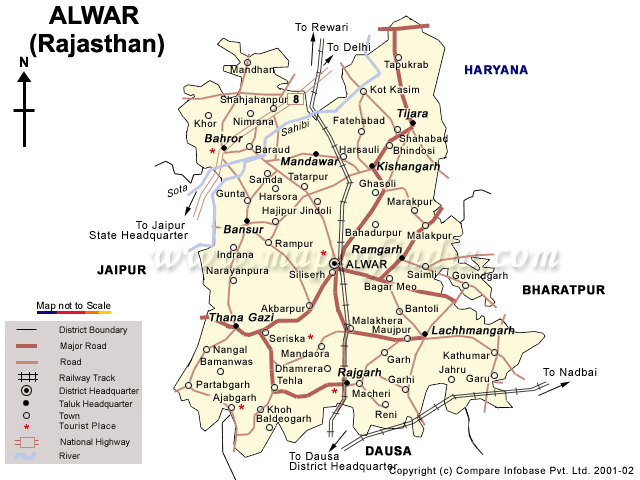
|
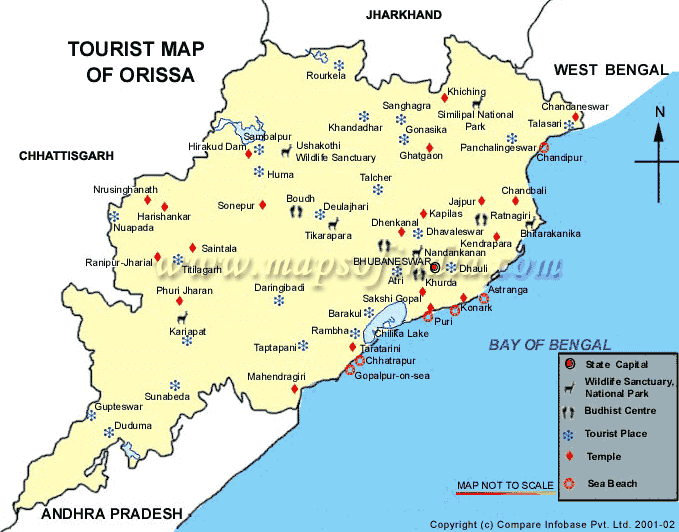
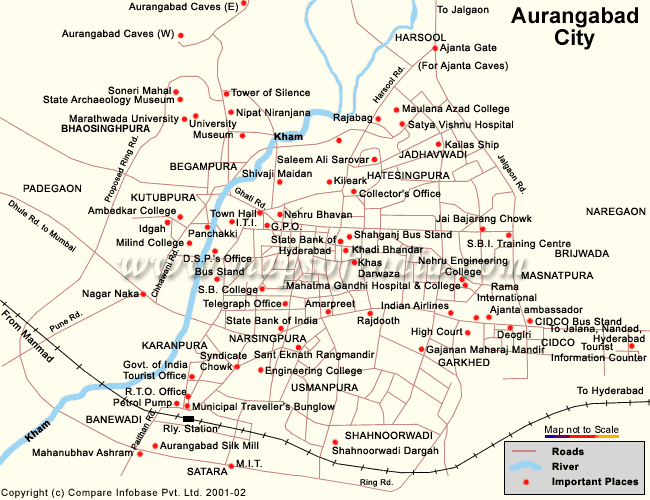

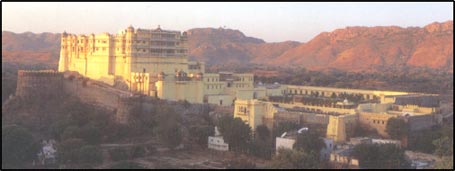
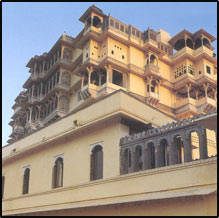

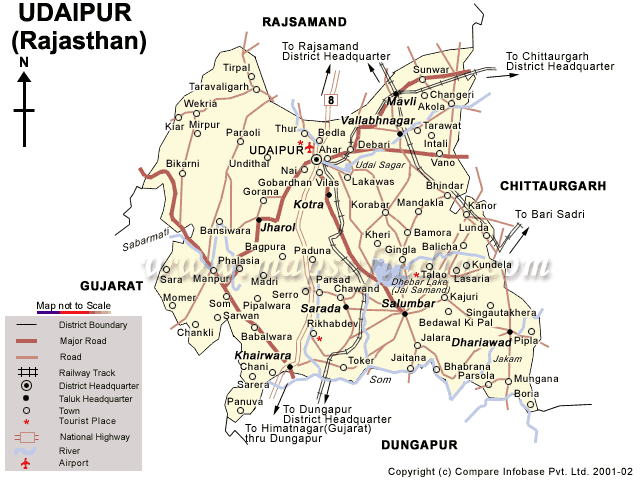

wow! Nice place in India,Is there any other tourist attractions in Indian, pls give some detail how long will it take to visit all places in India
ReplyDeleteThis comment has been removed by the author.
ReplyDeleteTaj Mahal Tour package-Expert Travel India:-offers Online Booking of Taj Mahal Tour India-overnight taj mahal tour,discount tajmahal agra,Delhi agra Jaipur Tour, Overnight Agra Tour,delhi to agra tours,Agra Daily Tour,Delhi To Agra Daily Tours,Overnight Taj Maha Travel,Taj Mahal Tours,Taj Mahal Day Tour From Delhi
ReplyDeleteNorth india tour packages offers to tourists that got to seen lovely and North States of India with totally different far-famed identities. These packages embody the states like city, Agra, Rajasthan, Lucknow and Varanasi.
ReplyDeleteGreat informative blog thanks for sharing the best information about India tour journey.
ReplyDeletekhajuraho tour packages